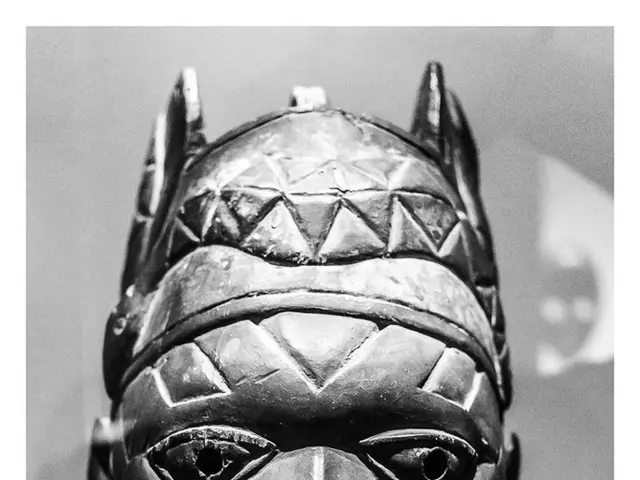Distinguishing Age Spots from Skin Cancer: Identifying the Variables
Hey there! Let's talk skin conditions, specifically age spots, skin cancer, and actinic keratosis. While they may sometimes resemble each other, it's crucial to identify their unique characteristics to ensure you take the right steps.
What sets these three skin issues apart?
Age Spots (Liver Spots or Solar Lentigines)
These are harmless darker patches that appear on the skin due to excess melanin production in response to UV radiation. They typically appear flat, smooth, and non-itchy, and their color can range from yellow, brown, or gray. Age spots usually appear on sun-exposed areas such as the face, hands, shoulders, and arms, among others.
Actinic Keratosis (AK)
AK is a precancerous growth caused by UV radiation damage. It typically presents as rough, scaly patches that can be dry or crusty and often match the surrounding skin color. AK can develop on virtually any sun-exposed area, but it's more common in areas like the face, scalp, hands, forearms, and lower legs.
Skin Cancer (Squamous Cell Carcinoma - SCC)
SCC is a type of skin cancer that can develop from AK. Symptoms include firm, red nodules or patches that may bleed or crust over and can invade deeper tissues.
Can age spots turn into cancer?
Nope, age spots cannot transform into cancer. However, AK can become SCC if left untreated, so it's essential to keep an eye on any unusual skin changes.
When should you consult a doctor?
If you notice any unusual skin changes, such as marks that are asymmetrical, blurred, ragged, changing size, color, or shape, multiple colors, pink, blue, purple, black, or brown coloring, raised red patches, pale or yellow firm patches, pain, itching, oozing, or bleeding, crusty or scaly patches, or raised edges that lower in the middle, consult a healthcare professional. Early detection of skin cancer can significantly improve the chances of effective treatment.
Diagnosis
Age spots are usually diagnosed based on their appearance during a physical examination, while AK and SCC may require a biopsy for confirmation.
Treatment
Treatment options for AK and SCC may include topical therapies, radiation therapy, chemotherapy, immunotherapy, or systemic medications, depending on the individual case. In contrast, age spots don't require medical treatment but may be reduced in appearance through cosmetic treatments like laser therapy or chemical peels.
So, stay vigilant and don't let skin issues catch you off guard! If something looks off, don't hesitate to reach out to a medical professional. Early detection and timely treatment can make all the difference.
- Age spots, while they may resemble other skin conditions, are harmless darker patches caused by excess melanin in response to UV radiation.
- Actinic Keratosis (AK), on the other hand, is a precancerous growth caused by UV radiation damage, typically appearing as rough, scaly patches.
- Squamous Cell Carcinoma (SCC) is a type of skin cancer that can develop from AK and is characterized by firm, red nodules or patches.
- AK can potentially become SCC if left untreated, underscoring the importance of identifying and addressing unusual skin changes.
- Symptoms of SCC include red nodules or patches that may bleed or crust over, invading deeper tissues.
- If you notice any unusual skin changes such as asymmetrical, changing, colored, or bleeding spots, it's essential to consult a healthcare professional for early detection and potential treatment.
- Diagnosis of AK and SCC may require a biopsy for confirmation, while age spots are usually identified through a physical examination.
- Age spots don't require medical treatment, but their appearance can be reduced through cosmetic treatments like laser therapy or chemical peels, while AK and SCC may require topical therapies, radiation therapy, chemotherapy, immunotherapy, or systemic medications for treatment.







